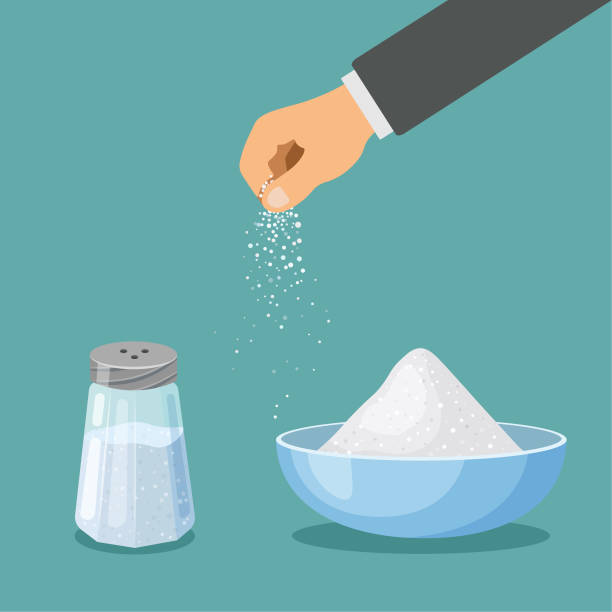Sodium is a necessary mineral, essential for the proper functioning of the human body. It regulates the amount of fluid in the body, the absorption of nutrients and also has a very important role in the transmission of nerve impulses and the contraction of muscles.
Our body receives sodium from food and absorbs it through the small intestine. The regulation of thirst is related to the amount of sodium in our body. The hypothalamus has osmoreceptors that induce us to feel thirsty if we have too much sodium and too little water in the body and through the pituitary it will order the production of the hormone vasopressin that causes us to lose fluid through the urine when there is excess of fluid in the body and, consequently, a low concentration of sodium, regulating this condition with the loss of fluid.
Thirst, therefore, serves to naturally regulate the amount of sodium in our body. That is why we are thirsty and that is why eating foods that are too salty makes us want to drink more water. In healthy people, thirst regulates the amount of water we need and we should not force a healthy child to drink, although if it is very hot, offer them liquid.
All foods have sodium in their chemical composition, just as they contain other minerals. Foods of animal origin have a higher concentration of sodium than vegetables. However, there are foods that contain it in very high amounts. These foods are the main ones excluded in low sodium diets and we should not offer them to children on a regular basis, even if they are old enough to eat them.
Sodium is necessary, but in the right measure
For children, great attention should be paid to the consumption of cold cuts, sausages, pickles, salted meats, preserves, canned goods, hard cheeses, mayonnaise, mustards, sauces, soup cubes, powdered soups, butter, margarines, industrial pastries or any other food. precooked or prepared.
We have already established that babies should be cooked without salt and not given industrial products that may contain sodium. For children over one year of age and of any age, it must always be borne in mind that approximately 75% of the sodium we consume comes from sources other than the salt shaker, so cooking without salt or with very little salt is a good habit. and always read the labels of the food we buy.
The baby’s kidneys are still too small to handle large amounts of this mineral, so the puree, the porridges or other foods that we prepare should be as natural as possible, without preservatives and without added salt.
The recommendation is no salt in baby food. So that it is not soda, you can add spices that provide flavor and good nutrients.
I hope that with these recommendations it will be easier to prevent babies from consuming excess salt.
Currently in Spain an average of 9.8 g of salt is consumed per day per person. This figure is considerably different from the recommendations made by the World Health Organization (WHO), which recommends that the daily amount of salt that should be ingested should be less than 5 g / day (which is equivalent to a level tablespoon of dessert ). As you can see, the intake of the Spanish is approximately double the recommendations of health agencies. But is the amount of salt we eat really important?
Well, the answer is absolutely YES. Numerous studies have shown that excessive consumption of salt favors an increase in blood pressure, which can lead to hypertension. Furthermore, this increased pressure is closely related to diseases such as cardiovascular diseases, which are one of the leading causes of death worldwide.
What foods contain the most salt?
That is why it is very important to know which are the foods that provide more salt in the diet since this is not only found in the salt shaker, but it is part of many foods and that you can find out below:
Prepared products: many of these products have a high salt content, so it is important to look at the product label, where you can find the amount of salt it contains. In this way you will know how much salt you take with that product and you will be able to compare them with other brands. Watch out! Some manufacturers still label sodium in place of salt and these are not equivalent. If you come across such a product and want to know its salt content, just multiply the amount of sodium by 2.5.
Preserves and canned foods: In general, canned foods and preserves are high in salt. For this reason, it is advisable to always choose fresh food.
Cheeses: they have a high salt content, especially the cured ones. They also have a high amount of fat so the consumption of this type of cheese should

